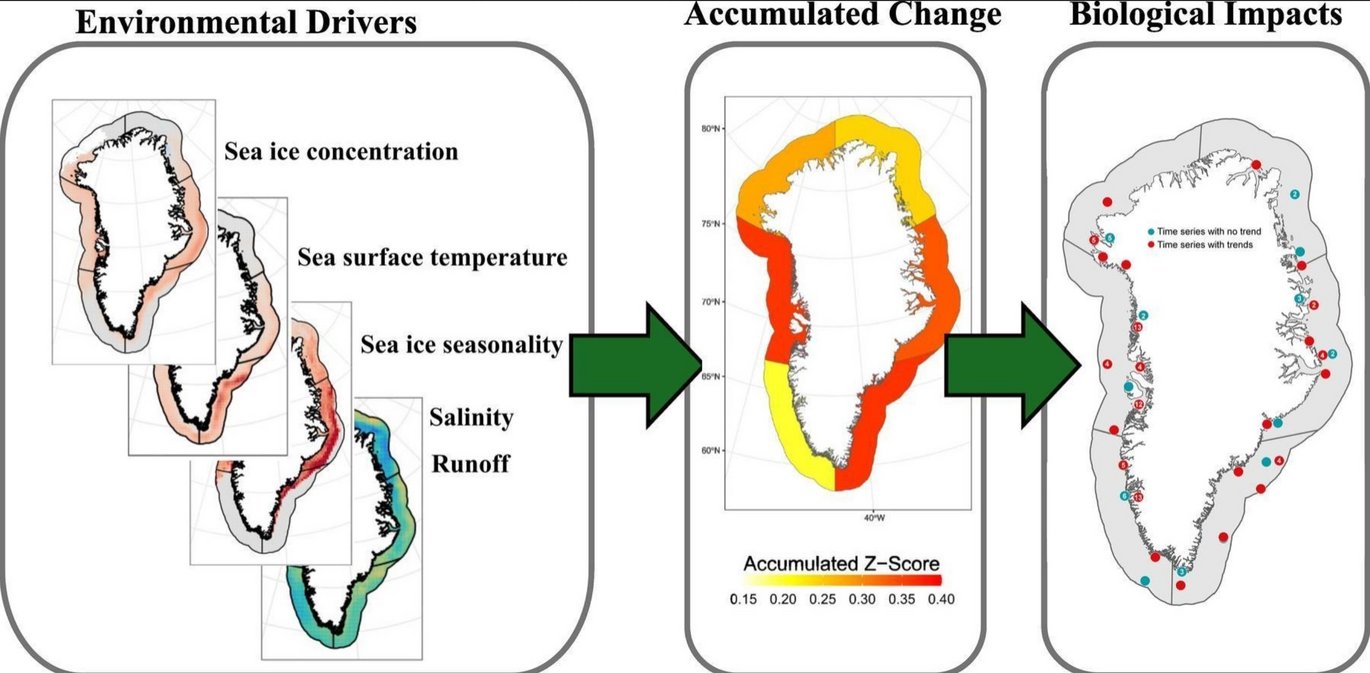Climate change and its diverse regional impacts on Greenland's marine biota
New publication by Thomas Gjerluff Ager, Mikael K. Sejr, Carlos M. Duarte, Kenneth D. Mankoff, Vibe Schourup-Kristensen, David Boertmann, Eva Friis Møller, Jakob Thyrring, Dorte Krause-Jensen

Abstract:
This study quantified climate-driven changes and spatial variability in key environmental drivers over four decades along Greenland's coastal and shelf marine ecosystems and evaluated their impacts on marine biota divided into six regions. We analyzed trends in sea ice concentration and seasonality, sea surface temperatures, salinity, and freshwater inputs from ice discharge and freshwater runoff. West, East, and Southeast Greenland were most impacted by climate change, driven by increasing sea surface temperatures (0.22–0.5 °C decade−1), freshwater inputs (10.14–24.93 Gt yr−1 decade−1), declining sea ice concentrations (3–5.3 % decade−1), and more open water days (10.92–23.9 days decade−1). The Northwest and Northeast regions appeared more resilient due to lower sea surface temperature increases (0.01–0.03 °C decade−1) and sea ice declines (0.5–2.1 % decade−1). Changes in Southwest Greenland were limited to sea surface temperature (0.27 °C decade−1) and freshwater runoff (7.66 Gt yr−1 decade−1) increases since the 1990s. Synthesized evidence from 94 marine biota time series showed 73 exhibiting significant changes, and 37 identified an environmental driver: sea ice (20), temperature (19), and runoff (2). Only four time series considered multiple drivers. Biota time series trends mirrored regional environmental changes; 78 % changed significantly in West, East and Southeast regions combined, 73 % in southwest, and 56 % in the northern regions. Fish, benthic flora, and benthic fauna responses remained unclear due to data gaps, underscoring the need for further research. In conclusion, our findings reveal widespread biological change linked to climate but with distinct regional patterns in environmental drivers and associated responses across Greenland.
https://doi.org/10.1016/j.scitotenv.2025.179443
